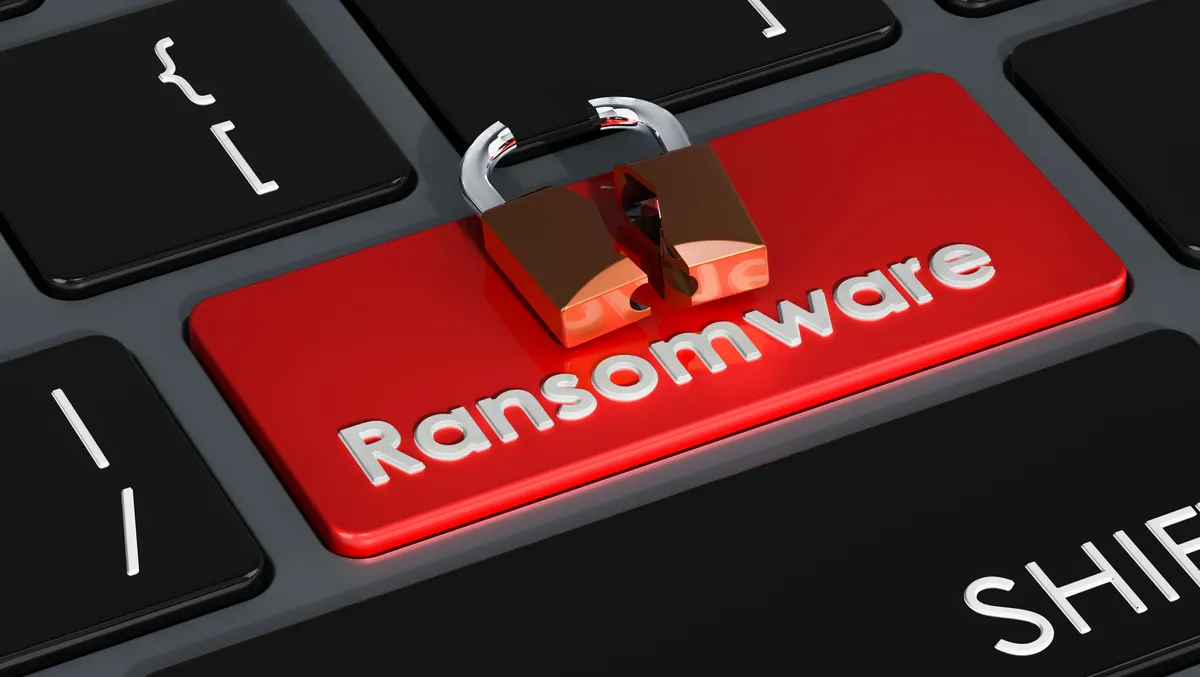
Nearly 40% increase in global ransomware attacks – report
There has been an alomst 40% increase in global ransomware attacks, according to a new report.
Zscaler announced the release of the 2023 ThreatLabz Ransomware Report. This year's report tracks the ongoing increase in complex ransomware attacks and spotlights recent ransomware trends, including the targeting of public entities and organisations with cyber insurance, growth of ransomware-as-a-service (RaaS), and encryption-less extortion.
Since April 2022, ThreatLabz has identified thefts of several terabytes of data as part of several successful ransomware attacks, which were then used to extort ransoms.
"Ransomware-as-a-Service has contributed to a steady rise in sophisticated ransomware attacks," says Deepen Desai, Global CISO and Head of Security Research, Zscaler.
"Ransomware authors are increasingly staying under the radar by launching encryption-less attacks that involve large volumes of data exfiltration. Organisations must move away from using legacy point products and instead migrate to a fully integrated zero trust platform that minimises their attack surface, prevents compromise, reduces the blast radius in the event of a successful attack, and prevents data exfiltration."
"The evolution of ransomware is characterised by the inverse relationship between attack sophistication and barrier of entry for new cybercriminal groups. The barrier of entry has decreased, while cyberattacks have grown in sophistication, due to the prevalence of RaaS, a model where threat actors sell their services on the dark web for 70-80% of ransomware profits.
"This business model has continued to increase in popularity over the last few years as evidenced by the frequency of ransomware attacks, which increased by nearly 40% over the last year. One of the most noteworthy trends that aligned with this growth in 2023 has been the growth of encryption-less extortion, a style of cyberattack that prioritises data exfiltration over disruptive encryption methods."
Top Countries Targeted by Ransomware
The United States was the most targeted country by double-extortion ransomware attacks, with 40% of all victims calling this region home. The following three countries combined, Canada, United Kingdom, and Germany, had less than half of the attacks that targeted U.S. entities. The most prevalent ransomware families that Zscaler ThreatLabz has been tracking include BlackBasta, BlackCat, Clop, Karakurt, and LockBit, all of which pose a significant threat of financial losses, data breaches, and operational disruption to individuals and organisations of all sizes.
Over the last year, the most-targeted market sector globally was manufacturing, where intellectual property and critical infrastructure are attractive targets for ransomware groups. All ransomware groups tracked by Zscaler victimised businesses in this industry, which included companies engaged in goods production for sectors including automotive, electronics, and textiles - just to name a few. Zscaler research noted that the BlackBasta ransomware family was particularly interested in manufacturing organizations, targeting these types of businesses more than 26% of the time.
Growing Trends in Ransomware
In 2021, ThreatLabz observed 19 ransomware families that adopted double or multi-extortion approaches to their cyberattacks. This has since grown to 44 ransomware families observed. The reason these types of attacks are popular is because after they encrypt the stolen data, attackers threaten to leak the data online to further increase the pressure on victims to pay.
The increasing popularity of Encryptionless Extortion attacks, which skips over the process of encryption, employs the same tactic of threatening to leak victims data online if they don't pay. This tactic results in faster and larger profits for ransomware gangs by eliminating software development cycles and decryption support. These attacks are also harder to detect and receive less attention from the authorities because they do not lock key files and systems or cause the downtime associated with recovery.
Therefore, Encryptionless Extortion attacks tend to not disrupt their victims business operations - which subsequently results in lower reporting rates. Originally, the Encryptionless Extortion trend started with ransomware groups like Babuk and SnapMC,. Over the last year, researchers saw a number of new families adopt the tactic, including Karakurt, Donut, RansomHouse, and BianLian.
Protecting Against Ransomware Attacks with the Zscaler Zero Trust Exchange
Guarding against ransomware attacks requires a comprehensive approach that tackles every stage of the threat, minimising potential harm. The Zscaler Zero Trust Exchange offers an all-encompassing zero trust framework integrated with cutting-edge ransomware protection measures.
By adopting the following guidelines, you can effectively reduce the risk of falling victim to a ransomware attack:
Prevent Initial Compromise: Employ consistent security policies that ensure uncompromising security. By implementing extensive SSL inspection capabilities, browser isolation, inline sandboxing, and policy-driven access control, you can thwart access to malicious websites, block channels of initial compromise and detect unknown threats from reaching your users. Stop Compromised
Users and Insider Threats: Combining inline application inspection and Identity Threat Detection & Response (ITDR) with integrated deception capabilities empowers you to detect, deceive, and effectively stop potential attackers, whether they are external threats or insiders with malicious intent.
Minimise External Attack Surface & Eliminate Lateral Movement: Prevent attackers from manoeuvering within your network by disconnecting applications from the internet and embracing a zero trust network access (ZTNA) architecture. Directly connecting users to applications, and applications to applications, rather than the network itself, significantly restricts the potential reach of an attack.
Prevent Data Loss: Implement inline data loss prevention measures with full TLS inspection and thoroughly inspect data both while in transit and at rest, to effectively stop data theft attempts. Stay one step ahead of threat actors by regularly updating software and providing comprehensive security training.
By leveraging the power of the Zscaler Zero Trust Exchange and adopting these best practices, organisations can proactively protect their users, workloads, IoT/OT devices and B2B connectivity, so that valuable data is safe from the ever-evolving threat landscape of ransomware attacks.


